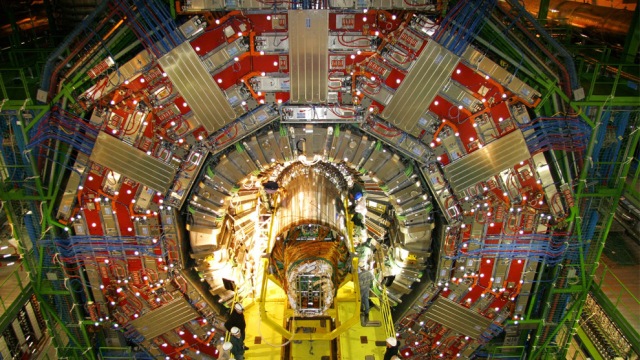C reative
Particle
Higgs
CPH Theory is based on Generalized light velocity from energy into mass.
CPH Theory in Journals
|
The Large Hadron Collider takes us one big step closer to finding the Higgs boson
|
|
one big step closer to finding the Higgs boson
Back in December, CERN physicists announced that they had probably spotted the long-awaited Higgs boson - at least, there was a 99.7% chance that they had. Now they've examined the data again, and it's looking even better for the Higgs. The December results came from the Large Hadron Collider's two independent experiments, ATLAS and CMS. While both potential sightings were promising, neither met the accepted standard for an actual discovery, which is known as a 5-sigma result. A 5-sigma result means there's only about a 1 in a million chance that the finding is the result of error or random fluctuation in the data. All the individual results hovered around the 2-sigma level, which together combined for a joint 3-sigma result. That meant there was only a 0.3% chance the results were in error. That's impressive, but it's well short of 1 in a million. Well, we can now close that gap quite a bit, as physicists on the Compact Muon Solenoid (CMS) have reexamined their original results and upgraded their Higgs signal from 2.5-sigma to 3.1-sigma. When combined with the ATLAS results, that gets us all the way to 4.3-sigma, which means there's a 99.996% of the Higgs really being there in the data. That's still short of the 5-sigma standard, but it's a lot closer than where we thought we were in December. With the Large Hadron Collider due to go back online this spring, there's a very real chance that 2012 could end up being the year of the Higgs. Via Scientific American. Image by Michael Hoch, © CERN.
Source: We Come From The Future
1 2 3 4 5 6 7 8 9 10 Newest articles
|
|
Sub quantum space and interactions from photon to fermions and bosons |
Interesting articles
Since 1962 I doubted on Newton's laws. I did not accept the infinitive speed and I found un-vivid the laws of gravity and time.
I learned the Einstein's Relativity, thus I found some answers for my questions. But, I had another doubt of Infinitive Mass-Energy. And I wanted to know why light has stable speed?

